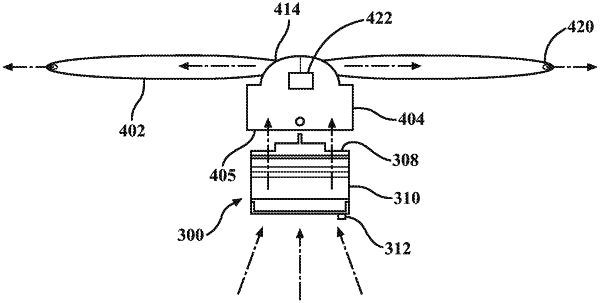| CPC B64D 15/04 (2013.01) [B64U 10/14 (2023.01); B64U 30/20 (2023.01); B64U 50/19 (2023.01)] | 20 Claims |

|
1. An electrically powered aerial vehicle, comprising:
at least one motor, each motor including a rotor and a stator;
a motor housing for each motor, the motor housing having an inlet opening and a discharge opening for airflow, the rotor disposed in the motor housing;
a plurality of rotor blades rotatable by the rotor, each of the plurality of rotor blades having a cavity running from a proximal end of the rotor blade toward a distal end of the rotor blade; and
a blade hub coupled to the rotor blades at the proximal end of each rotor blade and coupled to the motor housing at the discharge opening, the blade hub having a chamber defined therein, the chamber of the blade hub in fluid communication with the discharge opening of the motor housing and the cavity of each rotor blade,
wherein the airflow is centrifugally drawn in from the motor housing through the discharge opening of the motor housing and transported through the chamber and into the cavities of the rotor blades when the rotor blades are rotating.
|